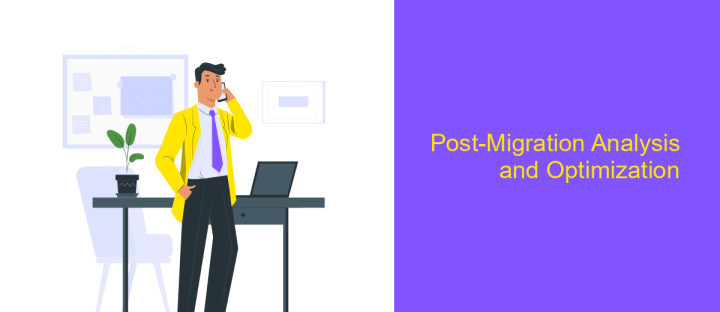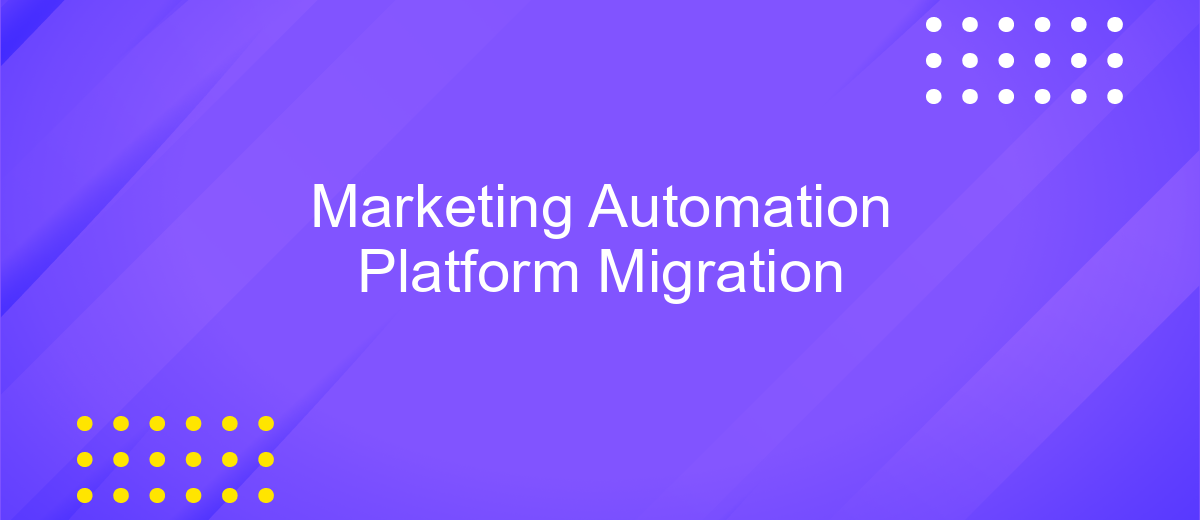Marketing Automation Platform Migration
Migrating to a new marketing automation platform can be a transformative step for businesses seeking to enhance their marketing efficiency and effectiveness. This process involves transferring data, workflows, and campaigns to a more advanced system, promising improved analytics, better integration capabilities, and streamlined operations. In this article, we will explore the key considerations, challenges, and benefits associated with marketing automation platform migration, ensuring a seamless transition for your business.
Introduction
In today's rapidly evolving digital landscape, businesses are increasingly turning to marketing automation platforms to streamline their marketing efforts and enhance customer engagement. As companies grow and their needs become more complex, the decision to migrate to a more advanced marketing automation platform becomes imperative. This transition, while promising significant benefits, presents its own set of challenges and considerations that businesses must navigate carefully.
- Assessing current platform limitations and future needs
- Ensuring data integrity and seamless transfer
- Training and onboarding teams for new systems
- Minimizing disruption to ongoing marketing campaigns
- Evaluating cost implications and return on investment
Embarking on a marketing automation platform migration is a strategic move that can significantly enhance a company's marketing capabilities. However, it requires meticulous planning and execution to ensure a smooth transition. By understanding the key factors involved and preparing adequately, businesses can leverage new technologies to foster growth, improve customer relationships, and stay competitive in the ever-changing market landscape.
Planning and Preparation

Embarking on a marketing automation platform migration requires meticulous planning and preparation to ensure a seamless transition. Begin by conducting a comprehensive audit of your existing systems to identify the data, processes, and integrations that need to be migrated. Establish clear objectives and timelines to guide the migration process, ensuring all stakeholders are aligned on the project's goals and expectations. It's crucial to evaluate the new platform's capabilities and map out how they align with your business needs. This evaluation should also include a detailed assessment of data security and compliance requirements to safeguard sensitive information during the migration.
Next, prioritize the integration of essential tools and applications to maintain workflow continuity. Consider leveraging services like ApiX-Drive, which can facilitate the integration process by connecting various applications seamlessly, reducing the complexity and time involved. Develop a robust testing plan to ensure all systems function correctly post-migration, and prepare a contingency plan to address potential challenges. Engage with cross-functional teams to gather insights and feedback, ensuring a holistic approach to the migration. Finally, establish a communication plan to keep all stakeholders informed throughout the process, supporting a smooth transition and minimizing disruptions to daily operations.
Execution and Deployment

The successful execution and deployment of a Marketing Automation Platform migration require meticulous planning and coordination. It begins with a comprehensive assessment of the existing infrastructure to identify potential challenges and align resources accordingly. Establishing a detailed timeline ensures all stakeholders are aware of their responsibilities and deadlines. Communication is key, as teams need to be regularly updated on progress and any adjustments to the plan.
- Conduct a thorough data audit to ensure all information is accurate and ready for migration.
- Develop a robust testing environment to simulate the migration process and identify potential issues.
- Implement a phased migration approach to minimize disruptions and allow for quick troubleshooting.
- Ensure all team members are trained on the new platform to maximize its capabilities post-migration.
- Establish a feedback loop to gather insights and optimize the deployment process continuously.
After the deployment, it is crucial to monitor the system closely to ensure stability and performance. Regular check-ins with the team can help address any unforeseen issues promptly. Continuous optimization and adaptation are essential to fully leverage the new platform's features and maintain alignment with business goals. A successful migration not only enhances operational efficiency but also drives better marketing outcomes.
Post-Migration Analysis and Optimization

After migrating to a new marketing automation platform, it is crucial to conduct a thorough post-migration analysis. This process involves evaluating the performance of the new system, ensuring data integrity, and identifying any discrepancies or issues that may have arisen during the transition. By doing so, businesses can confirm that their marketing operations are running smoothly and efficiently.
Once the initial analysis is complete, the next step is to focus on optimization. This involves fine-tuning the platform to maximize its capabilities and align it with the company's marketing goals. Optimization may include adjusting workflows, enhancing data segmentation, and improving campaign targeting.
- Review and refine automated workflows for efficiency.
- Analyze campaign performance metrics to identify areas for improvement.
- Ensure data accuracy and consistency across all channels.
- Solicit feedback from team members to identify usability issues.
Continuous monitoring and optimization are essential to leveraging the full potential of a marketing automation platform. By regularly assessing system performance and making necessary adjustments, businesses can enhance their marketing strategies, improve customer engagement, and achieve better ROI. This proactive approach ensures that the platform remains a valuable asset in the ever-evolving digital marketing landscape.
- Automate the work of an online store or landing
- Empower through integration
- Don't spend money on programmers and integrators
- Save time by automating routine tasks
Best Practices and Lessons Learned
When embarking on a marketing automation platform migration, it is crucial to thoroughly assess your current processes and data architecture. Begin by auditing your existing system to identify any inefficiencies or gaps. This will help you determine the necessary features and capabilities required in the new platform. Engage stakeholders from various departments to ensure that the migration aligns with the organization's broader goals. Clear communication and setting realistic expectations are vital to avoid disruptions during the transition.
One of the key lessons learned is the importance of seamless integration with other tools and platforms. Utilizing services like ApiX-Drive can significantly streamline this process by allowing easy and efficient data transfers between systems. This not only saves time but also reduces the risk of data loss or errors. Additionally, invest in comprehensive training for your team to fully leverage the new platform's capabilities. By fostering a culture of continuous improvement and adaptation, your organization can maximize the benefits of the new marketing automation system.
FAQ
What is a Marketing Automation Platform Migration?
How do I prepare for a Marketing Automation Platform Migration?
What are the common challenges during migration?
How can I ensure data integrity during the migration process?
What tools can assist with the integration of new marketing automation platforms?
Apix-Drive is a simple and efficient system connector that will help you automate routine tasks and optimize business processes. You can save time and money, direct these resources to more important purposes. Test ApiX-Drive and make sure that this tool will relieve your employees and after 5 minutes of settings your business will start working faster.


